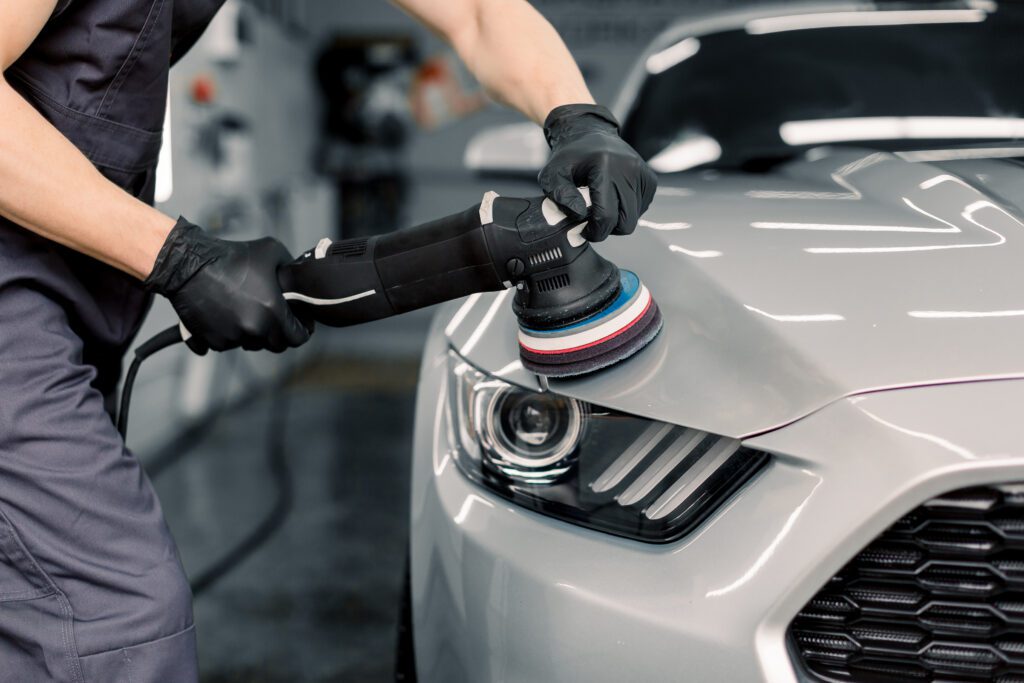Running an automotive detailing shop means juggling appointments, remembering loyal customers, managing upsells, and keeping operations tight. Most successful detailers already use a CRM (Customer Relationship Management) system to stay organized, but what if you could do even more with the information your CRM collects? That’s where data analytics comes in. It’s not just about storing customer details—it’s about using that data to make smarter decisions, boost your revenue, and build customer loyalty without guesswork.
Think of your CRM as your truck and data analytics as the GPS. Without direction, you’re just driving in circles. With the right tools, you’re headed straight to your next sale. Utilize our detailing CRM to make your business stand out and succeed.
CRM in Auto Detailing: The Foundation
A CRM system is the heartbeat of a well-run detailing business. It tracks:
- Customer names and contact info
- Vehicle types, service history, and frequency
- Payment details and invoices
- Past communications and reminders
- Follow-up dates, quotes, and even photos
But here’s the catch: just collecting that info doesn’t boost sales on its own. You need to analyze it to see patterns, trends, and opportunities. That’s where most shops fall short. They have the data—they just don’t use it. That’s where Urable makes a difference. The tools we build help you unlock the value already sitting in your CRM.
Why Data Analytics Matters for CRM Management
Data analytics is the process of pulling out meaningful insights from the numbers your business already creates every day. You don’t have to be a data scientist to use it—you just need the right system that can turn that info into action.
In auto detailing, analytics can answer questions like:
- Which customers are most likely to return next month?
- What services are your biggest moneymakers?
- Are you sending the right offers at the right time?
- Why are some customers ghosting after a quote?
With analytics, your CRM goes from being a storage unit to being a sales engine.
1. Get to Know Your Customers—For Real
No More Guessing
Instead of guessing what customers want, analytics shows you what they’ve already done. Maybe Jeep owners keep coming in for deep interior cleans, or customers with newer vehicles prefer ceramic coatings over wax. Once you spot the pattern, you can tailor your offers to fit. You’re not just reacting—you’re planning ahead.
Lifetime Value Awareness
You can also track how much a customer spends over time. Some clients book once a year; others spend thousands on coatings, tints, and maintenance packages. With that data, you can prioritize follow-ups for your best clients and build long-term relationships. Urable makes it easy to tag and track these high-value customers, so you never lose sight of who matters most to your bottom line.
2. Segment Your Customers the Smart Way
Go Beyond Demographics
Forget broad labels like “new” or “repeat” customers. Analytics lets you group customers by behavior:
- Frequency of visits
- Average spend per service
- Preferred vehicle types
- Response to discounts or promotions
- How they found you (Google, referrals, ads)
These segments help you speak directly to different customer needs and habits. That makes your marketing sharper and your messages more relevant.
Targeted Campaigns That Actually Work
Once you have your segments, you can send offers tailored to each one. For example:
- “Haven’t seen you in 3 months” offer for inactive customers
- Spring ceramic coat special for those who booked last year
- “Thank you” discounts for your most loyal clients
That’s the kind of precision that drives repeat business and makes every email worth opening.
3. Predict What Happens Next
Forecasting Behavior
Predictive analytics uses past trends to forecast future actions. Want to know who’s likely to book again this season? Or who might need a reminder? You don’t have to guess—your CRM data can tell you. For example, if a customer has booked a spring wax every March for the past three years, you can reach out in late February with a personalized promo. That kind of smart timing brings customers back—and ahead of the competition.
Stop Losing Customers
Analytics can also flag warning signs. If a regular client skips a visit or hasn’t opened your last few emails, your CRM can alert you. That gives you a chance to step in with a quick check-in or an incentive before they drift away for good. You don’t have to wonder why people stop coming. You’ll know—and you’ll have the tools to act fast.
4. Boost Marketing ROI (and Stop Wasting Money)
Analytics shows you which campaigns actually result in bookings. It’s not just about open rates—it’s about conversion.
- Which emails bring people back?
- Which ads lead to real appointments?
- What types of offers get ignored?
That data tells you where to focus your energy—and your marketing dollars. You can stop shooting in the dark and start running campaigns that actually bring in revenue.
5. Power Up Your Sales Team (Even If It’s Just You)
Focus on High-Quality Leads
Not every quote turns into a booking—and that’s okay. But analytics helps you spend your time on the quotes that matter.
You’ll be able to track:
- Who responds quickly
- Who tends to convert
- Who looks high-ticket services
That means less time chasing cold leads and more time locking in real money.
Sales Funnel Visibility
Where do quotes fall through the cracks? Do customers hesitate at the pricing stage? Are there drop-offs after you send a follow-up? Analytics shows you where deals get stuck, so you can tweak your approach and close more jobs.
6. Make Customer Service Stand Out
Personal Support, Fast
With analytics-enhanced CRM data, your team can see everything they need at a glance. When a customer calls or messages, you’ll know:
- What services they’ve had
- What issues they’ve had (if any)
- What they were quoted
- What they’ve said in past emails or forms
You can skip the small talk and get right to solving their problem—which makes for a better experience and a happier customer.
Proactive Problem Solving
Analytics doesn’t just help you react—it helps you reach out first. For example, if you notice a trend of first-time customers not returning, you can build a campaign to re-engage them. Or if people keep canceling at a certain stage, you can troubleshoot that process.
7. Types of Analytics That Matter
| Type | What It Answers | Example in Detailing CRM |
| Descriptive | What happened? | “How many new customers did we get last month?” |
| Diagnostic | Why did it happen? | “Why did our rebooking rate drop in June?” |
| Predictive | What’s likely to happen next? | “Which customers are likely to rebook this month?” |
| Prescriptive | What should we do about it? | “Which promo should we offer to bring back recent no-shows?” |
Each layer builds on the last, giving you deeper insight and more control over what happens next.
8. Real-World Example: Ceramic Coating Sales
Let’s say you’ve been offering ceramic coatings for over a year. With analytics, you notice:
- Customers who first booked basic wash + wax are now upgrading to coatings
Those with newer vehicles book coatings more often - Most coating sales come from emails sent in spring
Armed with that info, you build a spring campaign targeting people who’ve had a wax before and own a newer car. You highlight the benefits of long-term protection and offer 10% off. Sales increase 18% over last year. That’s not luck. That’s data at work.
9. Common Pitfalls (And How to Avoid Them)
Bad Data = Bad Decisions
If your CRM is full of duplicates, typos, or outdated info, your analytics won’t help much. Make a habit of:
- Confirming email addresses at check-in
- Logging services accurately
- Keeping customer notes clear and updated
A clean CRM is the foundation for strong analytics.
Weak Integration
If your CRM doesn’t talk to your marketing, quoting, or scheduling tools, you’re losing time and missing connections. Urable keeps everything connected so your data flows cleanly between systems—no extra apps needed.
Privacy and Trust
Always protect your customer’s info. That means following rules like GDPR or CCPA, using secure systems, and never spamming. When customers trust you, they stay loyal.
10. Looking Ahead: AI and Smarter CRM
AI is changing how CRMs work. New features are already starting to show up, like:
- Smart follow-up suggestions
- Automatic upsell recommendations
- Instant quote templates based on past jobs
- AI-written email drafts based on customer behavior
These tools aren’t just for huge businesses anymore. Urable is working on tools that bring these features to detailers at every level—so you can do more without working more.
Final Thoughts
Use the best CRM for car detailing. Data analytics isn’t just something for big companies with giant marketing teams. It’s something every automotive detailer can use—especially when it’s built right into the CRM you’re already using. At Urable, we believe that the more clearly you can see your business, the better you can run it. Data helps you see what’s working, spot what’s not, and act fast to fix it. Whether you’re sending smarter emails, chasing better leads, or keeping customers happy—analytics is how you grow. So if you’re ready to go from just managing relationships to actually growing sales, it’s time to put your data to work. Let’s make your CRM do more. Let’s make your business thrive.



